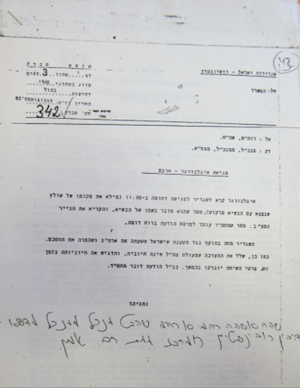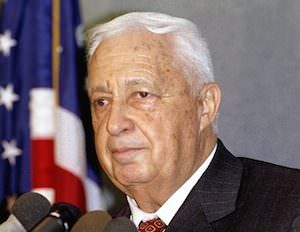Declassified Files Link U.S. to Palestinian Massacre
The outburst of anti-Americanism sweeping much of the Arab world was ignited by an off-the-wall film insulting Muhammad, but the underlying outrage is fed by decades of resentment against the US and its ally, IsraelThe outburst of anti-Americanism in the Arab world was ignited by an off-the-wall film insulting Muhammad, but the outrage is fed by decades of resentment against the U and Israel.
The outburst of anti-Americanism sweeping much of the Arab world was ignited by an off-the-wall film insulting Muhammad, but the underlying outrage is fed by decades of resentment against the U.S. and its ally, Israel.
Nothing fueled that anger more than the massacre of what’s estimated to be 800 to 2,000 Palestinians in the Sabra and Shatila refugee camps in Beirut on Sept. 16-18, 1982.
An Op-Ed in The New York Times on Sunday detailing U.S. complicity in that slaughter is a must-read for anyone trying to fathom the dynamics between Israeli and American leaders. It is eerily relevant to the current virulent demands of Israeli Prime Minister Benjamin Netanyahu that the U.S. support a military strike against Iran’s nuclear facilities.
Recently declassified Israeli files, analyzed by Seth Anziska, a doctoral candidate at Columbia University and the Op-Ed’s author, reveal the bare-knuckle discussions between U.S. and Israeli leaders 30 years ago, as American officials were essentially bullied and browbeaten to do nothing to prevent the rape, slaughter and dismemberment of the Palestinians, nearly all of them women, children and elderly men. The killings went on for three days while Israeli troops surrounded the camps, their flares lighting the cramped, ramshackle streets and homes within.
The massacre was carried out by fanatical right-wing Christian Phalangist militias, allied with the Israelis, who had invaded Lebanon in June 1982. Israel’s goal was to eradicate the PLO, which had set up a state within a state in Lebanon, and to ensure the rule of the country by Israel’s Lebanese Christian allies. Ultimately, President Reagan dispatched several hundred U.S. Marines to Beirut to help establish a cease-fire and oversee the evacuation of thousands of Palestinian fighters to other Arab countries.
But after Israel’s ally, Bashir Gemayel, was assassinated, the Israelis broke the truce and occupied West Beirut where thousands of Palestinian civilians were still living.
Israeli leaders claimed the presence of the Israel Defense Forces was necessary because there were still thousands of “Palestinian terrorists” in West Beirut. But U.S. officials had helped coordinate the withdrawal of thousands of Palestinian fighters a month earlier. They knew the Israeli claim was false and they feared a massacre if the Phalange militias were allowed into the Palestinian camps. Many top Israelis had the same fears.
On Sept. 17, 1982, American envoy to the Mideast Morris Draper and U.S. Ambassador to Israel Samuel Lewis met with Gen. Ariel Sharon and other Israeli officials to attempt to force an Israeli withdrawal from West Beirut.
According to Anziska, “The transcript of the Sept. 17 meeting reveals that the Americans were browbeaten by Mr. Sharon’s false insistence that ‘terrorists’ needed ‘mopping up.’ It also shows how Israel’s refusal to relinquish areas under its control, and its delays in coordinating with the Lebanese National Army, which the Americans wanted to step in, prolonged the slaughter.”
Anziska writes that Sharon, who knew that the Phalange forces had already moved into the camps, assured the Americans that “nothing will happen. Maybe some more terrorists will be killed. That will be to the benefit of all of us.”
Sharon went on to declare, “So, we’ll kill them. They will not be left there. You are not going to save them. You are not going to save these groups of the international terrorism.”
And when the Americans continued to insist on an Israeli withdrawal, Anziska writes, “Mr. Sharon exploded again: ‘When it comes to our security, we have never asked. We will never ask. When it comes to existence and security, it is our own responsibility and we will never give it to anybody to decide for us.’ “
Once the extent of the massacre had become known, U.S. officials from Reagan on down expressed their outrage but, writes Anziska, “The transcript of Mr. Draper’s meeting with the Israelis demonstrates how the United States was unwittingly complicit in the tragedy of Sabra and Shatila.”
The fallout from the killings was an enormous blow to U.S. influence and prestige in the region, which plummeted even further with the bombing of the Marine barracks in Beirut in October 1983 and the humiliating withdrawal of the Marines from Lebanon.
“The lesson of the Sabra and Shatila tragedy is clear,” concludes Anziska. “Sometimes close allies act contrary to American interests and values. Failing to exert American power to uphold those interests and values can have disastrous consequences for our allies, for our moral standing and, most important, for the innocent people who pay the highest price of all.”
What Anziska fails to examine in his Op-Ed is the extent to which American officials at the time were not just being confronted by militant Israeli leaders but also by the powerful pro-Israel lobby back in Washington. It’s a good bet that AIPAC and its allies — publicly and behind the scenes — were also demanding that Israel be given a free hand.
Those same volatile dynamics are playing out today, 30 years later, as intimidated American officials confront a blustering Israeli prime minister demanding that the U.S. join in an attack against Iran.
Your support matters…Independent journalism is under threat and overshadowed by heavily funded mainstream media.
You can help level the playing field. Become a member.
Your tax-deductible contribution keeps us digging beneath the headlines to give you thought-provoking, investigative reporting and analysis that unearths what's really happening- without compromise.
Give today to support our courageous, independent journalists.






You need to be a supporter to comment.
There are currently no responses to this article.
Be the first to respond.